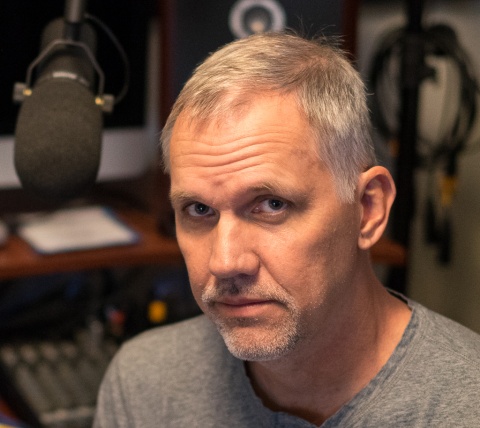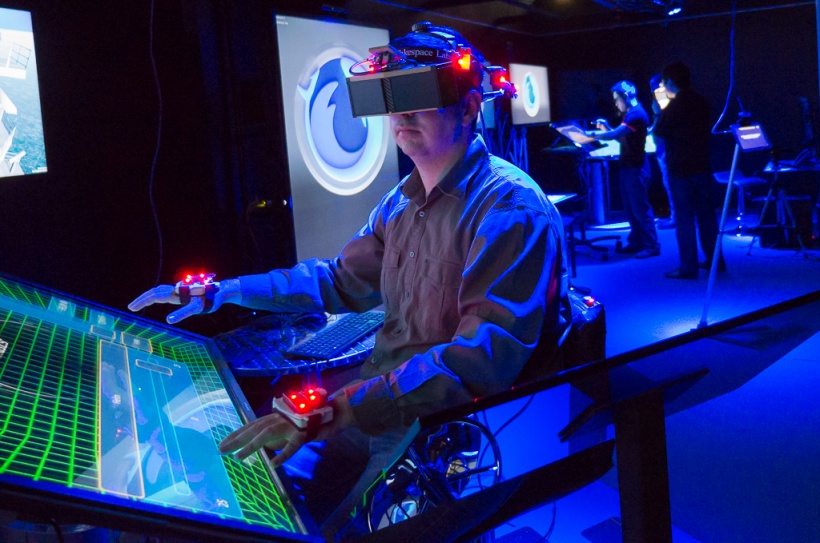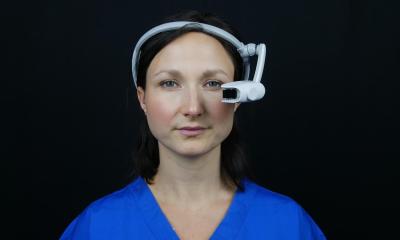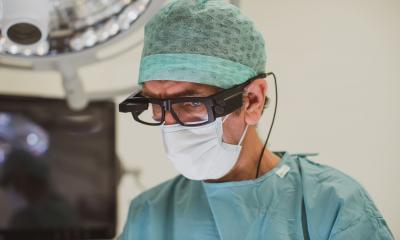Article • A new kind of therapy
VR goggles on prescription? Virtual reality gains a foothold in medical care
As Virtual Reality plays an increasingly important role in healthcare settings, physicians could soon be writing ‘prescriptions’ for such therapy.
Report: Mark Nicholls

For many years, Virtual Reality (VR) has been part of the gaming sector with eye goggles for players to interact with certain scenarios. However, more recently VR has shown it can deliver specific treatments in healthcare. It is already being applied, for example, to treat phobias and as a distraction therapy for pain. Work also progresses on how it can enable better outcomes for invasive procedures or on-going treatments by lowering stress levels.
Dr Todd Richmond, Director of the Mixed Reality Lab at the Institute for Creative Technologies (ICT) at USC, explained: ‘In the short-term there will likely be a lot of work using VR as a distraction therapy, while longer-term we’ll see VR used in more therapeutic roles. I predict that at some point in the not-too-distant future, physicians may be writing “prescriptions” for VR therapy.’
Due to the ability of a user to have cognitive embodiment in VR, there is a potential for treating a wide variety of mental health issues, phobias, and related issues
Todd Richmond
As one of the world’s leading authorities on VR in a clinical setting, the USC lab has seen pioneering work in this area. His colleague Dr Skip Rizzo, ICT’s Director for Medical Virtual Reality, has led a team to explore its use to treat post-traumatic stress disorder (PTSD) and other medical applications. In addition, in collaboration with Professor Leslie Saxon of the USC Center for Body Computing, his team has started looking at VR for stress reduction in patients about to undergo surgery. However, Richmond acknowledges that they still need to explore what VR can treat, how it works, efficacy and any associated dangers.
Studies have already shown that VR can have benefits that meet or exceed current pharmaceutical therapies in, for example, pain reduction in burns patients, or psychological therapies such as PTSD. ‘Due to the ability of a user to have cognitive embodiment in VR, there is a potential for treating a wide variety of mental health issues, phobias, and related issues,’ Richmond confirmed. ‘There is a more speculative potential for using VR to augment or replace drug regimens for certain types of treatments, and potentially ‘rewire’ neural pathways in constructive ways.’

The impact of wearables, implantables and biosensors also continues to spread from elite athletes – the first people to embrace these, to a broader population. ‘Having good biosensor data is still challenging, but the real hurdle is making that data actionable by the physician and individual,’ Richmond added. ‘There is a huge promise of improving elder/aging care through wearable, smart drugs, and other sensor systems. This is part of the broader question of the Internet of Things (IoT). Combining wearables, biosensors, voice agents (e.g. Alexa), and IoT again, provides the promise of more seamless healthcare, with the caveat that the real challenge is having the data tell a story that is actionable and will change human behaviour.’ However, he warns about rushing ahead too quickly with VR and other technology in a healthcare setting, stressing that the concept is still in the experimentation stage and does not provide ‘immediate fixes to the ills of society.’
VR offers great potential and can give clinicians a window into a patient that they would not otherwise have
Todd Richmond
‘Healthcare providers, just like educators, business leaders, and others, should view this emerging technology for what it is – a new medium for communication and collaboration that requires experimentation and time to understand and leverage,’ Richmond advises. He also points to the ethical responsibilities associated with the medium and warns that product developers need to assume some sense of responsibility in the conversation around ethics. Yet, VR offers great potential and ‘can give clinicians a window into a patient that they would not otherwise have,’ he said, pointing at Rizzo’s PTSD clinical app as a prime example. ‘It allows a clinician to quickly create a VR environment that mimics the memories of the patient. While this helps the patient confront and work through previous trauma, it also gives the clinician a visual image to go along with the talk therapy.’
Profile:
Dr Todd Richmond is Director of the Mixed Reality Lab at the Institute for Creative Technologies (ICT), University of Southern California (USC) in Los Angeles. A former chemistry professor, who incorporated multimedia and web technologies into his teaching and research, he moved to the ICT in 2006 where he currently leads the advanced prototype group. He works in areas of emerging disruptive technologies and their implications/applications for training, learning, and operations; future environments for communication and collaboration; immersive technologies; interactive education; visualisation and analytics.
22.06.2018











